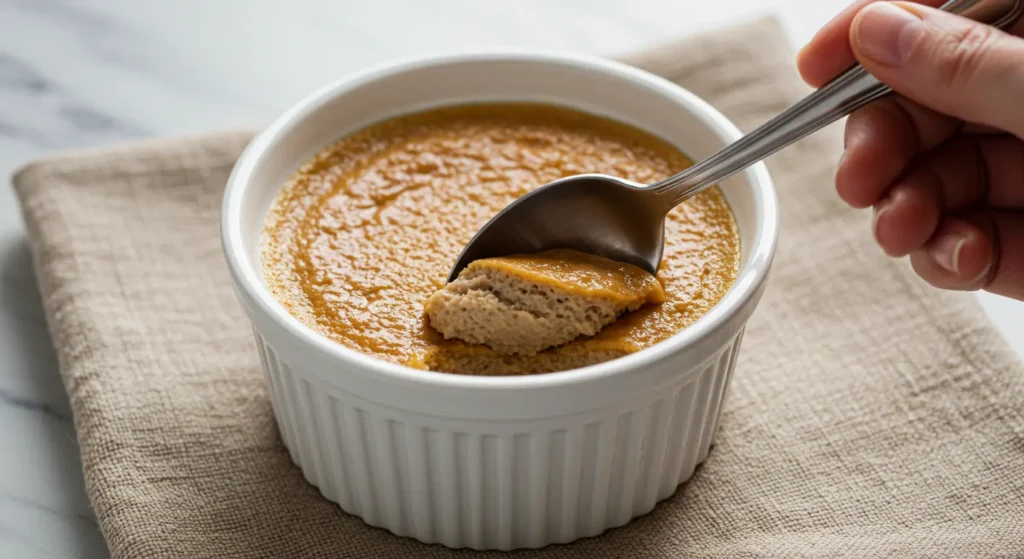Are you struggling to find sweet treats that align with your carnivore lifestyle? As a devoted carnivore dieter myself, I understand the challenge of craving something sweet while maintaining your commitment to animal-based nutrition. That’s why I’ve spent countless hours in the kitchen perfecting these incredible carnivore desserts that will revolutionize your approach to treats on this unique dietary path.
Carnivore Desserts – Why These Recipes?
When I first embarked on my carnivore journey three years ago, desserts were the hardest thing to give up. Most traditional desserts are loaded with sugar, flour, and plant-based ingredients that simply don’t fit into the carnivore approach. After weeks of experimentation in my kitchen, I discovered that it’s absolutely possible to create satisfying, delicious desserts using only animal-based ingredients.
What makes these carnivore desserts special is their simplicity and purity. By focusing on nutrient-dense animal products like eggs, butter, and cream, we can create treats that not only satisfy our sweet cravings but also provide valuable nutrition. Unlike conventional desserts that often leave you with a sugar crash, these carnivore-friendly options provide sustained energy and satiety.
In this comprehensive guide, I’ll share my top carnivore dessert recipes, explain the nutritional benefits of each, and provide variations to suit different preferences within the carnivore framework. Whether you’re strictly carnivore or following a more relaxed animal-based approach, these desserts will help you stay on track without feeling deprived.
Carnivore Desserts – Ingredients and Preparation
Ingredients List

The beauty of carnivore desserts lies in their simplicity. Here are the core ingredients you’ll need for most carnivore dessert recipes:
- Eggs: Preferably from pasture-raised chickens
- Heavy cream: Organic and grass-fed if possible
- Butter: Grass-fed and unsalted
- Ghee: Clarified butter with milk solids removed
- Cream cheese: Full-fat, without additives
- Mascarpone cheese: Italian cream cheese with a higher fat content
- Beef gelatin: Unflavored, from grass-fed sources
- Tallow: Rendered beef fat
- Suet: Raw beef fat
- Optional natural sweeteners (for those who include them): Raw honey, maple syrup
Substitution options:
- For dairy sensitivity: Use ghee instead of butter, or rendered animal fats like tallow or duck fat
- For egg sensitivity: In some recipes, additional gelatin can provide binding properties
Step-by-Step Instructions for Basic Carnivore Custard
Let’s start with a foundational carnivore dessert recipe that can be adapted in numerous ways:
- Gather your ingredients: 4 large eggs, 1 cup heavy cream, 1 tablespoon butter, optional: 1 teaspoon raw honey (if you include it in your version of carnivore)
- Prepare your equipment: Preheat your oven to 325°F (165°C) and place a kettle of water to boil for a water bath
- Create the base: Gently whisk eggs in a bowl, being careful not to incorporate too much air
- Heat the cream: In a saucepan, warm the cream and butter until the butter melts and the mixture is hot but not boiling
- Combine mixtures: Slowly pour the warm cream into the eggs while whisking constantly to prevent the eggs from cooking
- Optional: Add honey if using and whisk to incorporate
- Strain the mixture: Pour through a fine-mesh sieve to remove any egg bits that might have cooked
- Prepare for baking: Divide the mixture between four ramekins and place them in a baking dish
- Create a water bath: Pour hot water into the baking dish until it reaches halfway up the sides of the ramekins
- Bake: Place in the oven for 30-35 minutes until the custards are set but still slightly jiggly in the center
- Cool: Remove from the water bath and allow to cool to room temperature
- Chill: Refrigerate for at least 2 hours before serving
Tip: For a perfectly smooth custard, never let your cream mixture boil, and always whisk the eggs and cream together gradually.
Notes and Tips
- Storage: Most carnivore desserts can be stored in the refrigerator for 3-4 days. Custards and similar desserts are best consumed within 2 days for optimal texture.
- Serving suggestions: Serve custards chilled with a small sprinkle of sea salt to enhance the natural sweetness.
- Make-ahead instructions: Many carnivore desserts actually improve with a day in the refrigerator as the flavors develop and meld together.
- Temperature matters: Always bring ingredients like eggs and cream cheese to room temperature before preparing your desserts for the smoothest results.
- Quality counts: Since carnivore desserts contain few ingredients, the quality of each component significantly impacts the final result. Use the highest quality, preferably grass-fed and organic, ingredients you can find.
Carnivore Desserts – Nutritional Information

Nutrition Facts (Per Serving of Basic Carnivore Custard)
- Calories: (~180)
- Carbohydrates: (1g)
- Protein: (6g)
- Total Fat: (17g)
- Saturated Fat: (10g)
- Unsaturated Fat: (6g)
- Trans Fat: (0g)
- Fiber: (0g)
- Sugar: (1g)
- Cholesterol: (230mg)
- Sodium: (60mg)
What sets carnivore desserts apart from conventional treats is their impressive nutritional profile. A serving of carnivore custard provides valuable nutrients including:
- Fat-soluble vitamins: A, D, E, and K2 (from grass-fed dairy)
- Choline: Essential for brain health and methylation processes
- Conjugated Linoleic Acid (CLA): Found in grass-fed dairy, known for potential health benefits
- Complete protein: Containing all essential amino acids
Unlike traditional desserts that often contribute empty calories and sugar crashes, carnivore desserts provide sustained energy, support metabolic health, and offer genuine nutritional value.
Carnivore Desserts – History and Cultural Significance
The concept of carnivore desserts might seem modern, but animal-based sweet treats have historical precedence. Traditional cultures frequently utilized animal fats and proteins in their culinary creations, including desserts.
In many pre-industrial societies, particularly in colder climates where plant foods were scarce, people relied heavily on animal products. The Inuit, for example, traditionally enjoyed a dessert called “akutaq” or “Eskimo ice cream,” made from whipped fat (often caribou or seal), berries (when available), and sometimes fish. This demonstrates that animal-based desserts have been part of human culinary tradition for centuries.
The modern carnivore movement has revitalized interest in these traditional preparation methods, adapting them to contemporary tastes and nutritional understanding. By focusing on animal products, carnivore desserts represent a return to ancestral eating patterns while addressing modern health concerns related to processed foods and refined carbohydrates.
Similar concepts exist in other culinary traditions. French cuisine, renowned for its rich flavors, often incorporates animal fats and proteins into desserts. Crème brûlée, for instance, features a custard base made primarily from cream and egg yolks – ingredients that align perfectly with carnivore principles.
Carnivore Desserts – Creative Variations
Carnivore Cheesecake Cups
Ingredients:
- 8 oz cream cheese, softened
- 2 large eggs
- 1/4 cup heavy cream
- 1 tablespoon beef gelatin (bloomed in 2 tablespoons water)
- Optional: 1 teaspoon raw honey
Instructions:
- Blend cream cheese until smooth
- Add eggs one at a time, mixing well after each addition
- Incorporate heavy cream and bloomed gelatin
- Pour into individual cups and refrigerate until set (about 2 hours)
Nutritional highlight: Higher in protein and fat than traditional cheesecake, with minimal carbohydrates.
Whipped Tallow Clouds
Ingredients:
- 1/2 cup rendered beef tallow, cooled but still liquid
- 2 tablespoons heavy cream
- 1 egg white
- Pinch of salt
Instructions:
- Whip egg white until stiff peaks form
- In a separate bowl, whip tallow and cream until light and fluffy
- Gently fold in whipped egg white
- Pipe or spoon into serving dishes and chill until set
Nutritional highlight: Excellent source of stable saturated fats and fat-soluble vitamins.
Adaptation for Strict Carnivore vs. Animal-Based Approaches
For those following a strict carnivore diet, the recipes above can be made without any sweeteners or flavorings. For those following a more relaxed animal-based approach, small amounts of raw honey or maple syrup can be added for sweetness, and vanilla extract can enhance flavor profiles.
The key to successful carnivore desserts is focusing on texture and mouthfeel rather than extreme sweetness. The natural richness of animal fats provides a satisfying experience that can help transition away from sugar-laden conventional desserts.
Carnivore Desserts – Frequently Asked Questions

Are carnivore desserts really sweet enough to satisfy cravings?
After following a carnivore diet for a period of time, your taste buds typically reset. The natural sweetness in cream becomes more pronounced, and many people find that the richness of animal fats satisfies what they previously interpreted as a sweet craving. If you’re new to the carnivore approach, give your palate time to adjust – most people report that their taste preferences shift significantly within 2-3 weeks.
Can I freeze carnivore desserts?
Custard-based carnivore desserts don’t freeze well as they tend to separate upon thawing. However, some variations like the Whipped Tallow Clouds freeze beautifully and can be enjoyed as a frozen treat. If freezing, consume within 1 month for best quality.
What can I substitute for heavy cream if I’m sensitive to dairy?
For dairy-sensitive individuals, rendered animal fats like duck fat or tallow can replace cream in many recipes. These fats can be whipped when cooled to the right temperature, providing a similar mouthfeel. Alternatively, coconut cream is technically plant-based but is sometimes included in animal-based approaches as a transitional food.
How long does it take to prepare carnivore desserts?
Most carnivore desserts require 15-20 minutes of active preparation time. However, many recipes need additional time for chilling or setting, typically 2-4 hours. The basic carnivore custard takes about 15 minutes to prepare plus 35 minutes of baking time and 2 hours of chilling.
Are carnivore desserts sustainable long-term?
For those committed to a carnivore or animal-based lifestyle, these desserts provide a sustainable alternative to conventional treats. By focusing on nutrient-dense ingredients rather than processed sugars and flours, carnivore desserts support metabolic health and can be incorporated into a long-term nutritional strategy.
Carnivore Desserts – Final Thoughts
Embracing carnivore desserts doesn’t mean giving up on culinary pleasure – it’s about redefining what dessert means in the context of optimal nutrition. These animal-based treats offer a unique opportunity to satisfy cravings while providing your body with quality nutrients that support overall health.
The key to success with carnivore desserts is patience and experimentation. As your taste preferences evolve, you’ll discover new appreciation for the natural flavors and textures of animal-based ingredients. Don’t be afraid to adjust recipes to suit your individual preferences and nutritional goals.
Remember that the carnivore approach is highly individual. Some practitioners find that occasional sweet treats, even those made with carnivore-compatible ingredients, can trigger cravings or stall progress. Others find that including these desserts makes the lifestyle more sustainable and enjoyable. Listen to your body and adjust accordingly.
I encourage you to try these recipes and share your experiences. The carnivore community thrives on shared knowledge and innovation, and your feedback could help others on their journey.
Have you tried making carnivore desserts before? What’s your favorite animal-based treat? Leave a comment with your experience or questions – I’m always looking for new ideas and insights to share with the community!
For more information about the historical context of animal-based diets and their cultural significance, you might find this Wikipedia article on traditional Inuit cuisine interesting.


3 thoughts on “10 Carnivore Desserts That Satisfy Your Sweet Tooth Without Breaking Your Diet”